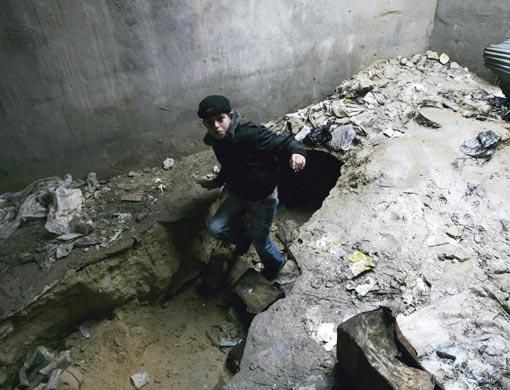Occupied Jerusalem: Despite the risks, 16-year-old Yihya, from the Rafah area in the Gaza Strip, says building tunnels to Egypt is the only job he knows that puts food on the table.
"The moment my friends and I start digging, my heart beats a little faster because two weeks ago one of my friends died when a tunnel collapsed on him," Yiyha told Gulf News by telephone.
Nowadays they use modern machinery for the digging and not bare hands like in the days of the Israeli occupation.
Yihya, who gave up the life of a child to spend his time digging, says he uses Google Earth to help determine where the tunnel should exit on the Egyptian side.
The estimated cost of building a tunnel that is about 800 metres long, stretching between Rafah in the Gaza Strip and the Egyptian side of Rafah, is estimated to be $30,000. Another $30,000 is paid to the owners of the house underneath which the tunnel's entrance is situated.
On the Egyptian side the tunnel exit is generally located in deserted areas.
Although the cost of building a tunnel has increased, the tunnel owner can still make a good profit by moving supplies and people between the Gaza Strip and Egypt.
One of the tunnel owners, who wanted to remain anonymous, told Gulf News tunnel digging was revived when Israel withdrew from the Gaza Strip.
He says the tunnel-building process has been modernised. Some tunnels can be up to 1,200 metres long and 10 metres deep, especially those running under the Kharsani Wall that Israel built along the border.
The tunnels now have electricity and telephone lines.
"We rent out the tunnels for around $20,000 for a number of days. Whoever rents the tunnel can use it for transporting anything and anyone without interference from us," the owner of the tunnel told Gulf News.
Specialised excavators and designers supervise the digging. They repair run-down tunnels and develop ways of linking tunnels, to create a veritable maze with various entrances and exits that are difficult to discover.
But the tunnels are also a sign of a widening income gap in the Gaza Strip.
Only a select few make immense profits from the tunnels.
There is a story of a bride who was taken to her groom through the tunnel, who had paid $6,000 for the privilege.
Some say the tunnels have been a lucrative business only for a new class of rich people.
There have also been reports of tunnels that collapse on Palestinians who were buried alive under the sand, without further investigation.












